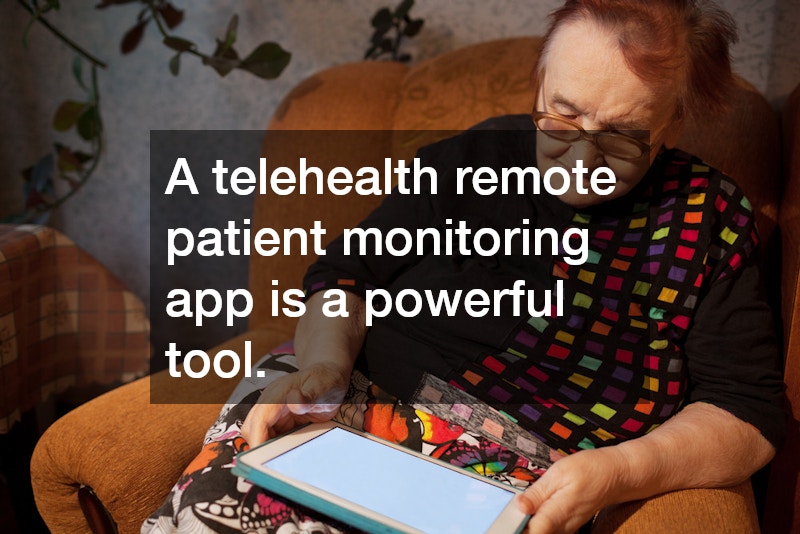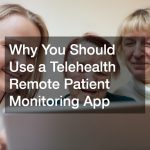
The healthcare landscape has evolved significantly in recent years, with technology playing a crucial role in improving access and quality of care. One innovation that has transformed patient care is the telehealth remote patient monitoring app, a tool designed to bridge the gap between patients and healthcare providers. By enabling real-time health monitoring and communication, these apps offer convenience, efficiency, and better outcomes for patients and providers alike. Here’s why using a telehealth remote patient monitoring app is a smart choice for managing your health.
Enhanced Access to Healthcare
A telehealth remote patient monitoring app allows patients to access healthcare services from virtually anywhere. For individuals living in remote or underserved areas, these apps provide a lifeline to medical expertise that would otherwise be difficult to obtain. Instead of traveling long distances to see a healthcare provider, patients can use the app to share their health data and communicate with their doctor.
This accessibility is especially beneficial for individuals with mobility challenges or chronic conditions that require regular monitoring. It ensures that patients receive timely care without the physical and logistical barriers often associated with in-person visits.
Real-Time Health Monitoring
One of the primary advantages of a telehealth remote patient monitoring app is its ability to collect and share real-time health data. These apps are often paired with wearable devices or sensors that track vital signs such as heart rate, blood pressure, glucose levels, and oxygen saturation. The data is automatically transmitted to the patient’s healthcare provider, enabling continuous monitoring.
Real-time monitoring ensures that potential health issues are detected early, allowing for prompt intervention. For example, a sudden spike in blood pressure or irregular heart rhythms can trigger an alert to the provider, who can then take immediate action to prevent complications.
Improved Chronic Disease Management
Managing chronic conditions such as diabetes, hypertension, or heart disease often requires regular check-ins and adjustments to treatment plans. A telehealth remote patient monitoring app simplifies this process by enabling consistent communication between patients and healthcare providers.
Patients can share their daily readings, such as blood sugar levels or weight fluctuations, through the app. This constant flow of information allows providers to adjust medications, recommend lifestyle changes, and track progress more effectively. It empowers patients to take an active role in their health while reducing the need for frequent office visits.
Convenience and Time Savings
Using a telehealth remote patient monitoring app eliminates the need for time-consuming trips to the doctor’s office. Patients no longer have to arrange transportation, wait in crowded waiting rooms, or take time off work for routine check-ups. Instead, they can share their health data and consult with their healthcare provider from the comfort of their home.
This convenience also extends to healthcare providers, who can monitor multiple patients efficiently without the constraints of traditional appointments. The result is a streamlined healthcare experience that benefits both parties.
Cost-Effectiveness
A telehealth remote patient monitoring app can lead to significant cost savings for patients and healthcare systems alike. For patients, fewer in-person visits mean reduced expenses for travel, parking, and missed workdays. Additionally, early detection of health issues through continuous monitoring can prevent costly hospitalizations and emergency room visits.
For healthcare providers and systems, these apps help reduce the burden on clinics and hospitals, allowing resources to be allocated more effectively. By focusing on preventive care and early intervention, telehealth remote patient monitoring supports more efficient use of healthcare budgets.
Personalized and Proactive Care
Telehealth remote patient monitoring apps offer a personalized approach to healthcare. By analyzing the data collected, healthcare providers can tailor treatment plans to the unique needs of each patient. This personalized care leads to better outcomes and higher patient satisfaction.
Moreover, these apps enable proactive care by identifying trends and potential issues before they become serious. For example, consistent monitoring of a diabetic patient’s glucose levels can reveal patterns that might require changes to their diet or insulin regimen, preventing complications down the line.
Enhanced Patient Engagement
One of the most significant benefits of using a telehealth remote patient monitoring app is the increased engagement it fosters between patients and their healthcare providers. These apps often include features such as educational resources, reminders for medication or appointments, and tools for tracking progress toward health goals.
When patients have access to their health data and see their progress in real-time, they are more likely to stay motivated and adhere to treatment plans. This active involvement improves outcomes and encourages healthier behaviors.
Data Security and Privacy
Modern telehealth remote patient monitoring apps are designed with robust security measures to protect sensitive health information. They comply with regulations such as HIPAA (Health Insurance Portability and Accountability Act) to ensure that patient data is securely transmitted and stored.
While some patients may initially feel concerned about sharing personal health information digitally, the security features of these apps provide peace of mind, allowing them to reap the benefits of remote monitoring without compromising privacy.
Future of Healthcare Integration
Telehealth remote patient monitoring apps are part of a broader movement toward technology-driven healthcare. They integrate seamlessly with electronic health records (EHRs), creating a comprehensive picture of a patient’s health history and current status. This integration ensures continuity of care and allows providers to make data-informed decisions.
As these technologies continue to evolve, they are likely to incorporate artificial intelligence and predictive analytics, further enhancing their ability to improve patient care. The future of healthcare will rely heavily on such tools to deliver efficient, accessible, and personalized care.
A telehealth remote patient monitoring app is a powerful tool that transforms how patients manage their health and interact with healthcare providers. By offering real-time monitoring, enhanced convenience, cost savings, and personalized care, these apps address many of the challenges associated with traditional healthcare delivery. Whether you’re managing a chronic condition or simply seeking a more proactive approach to health, adopting a telehealth remote patient monitoring app is a step toward better outcomes and a more connected healthcare experience.
.




